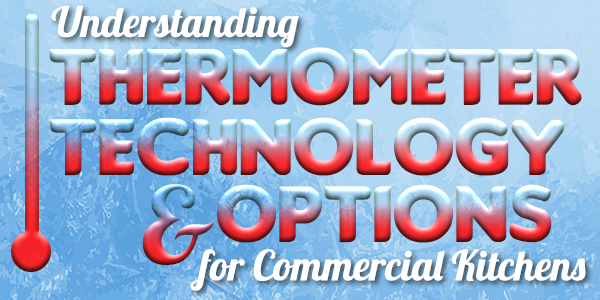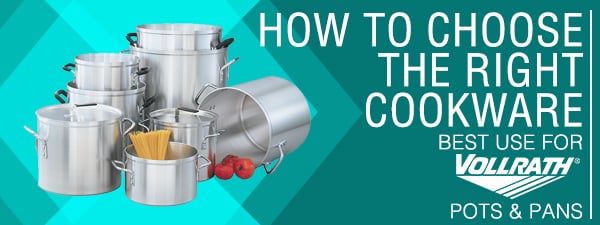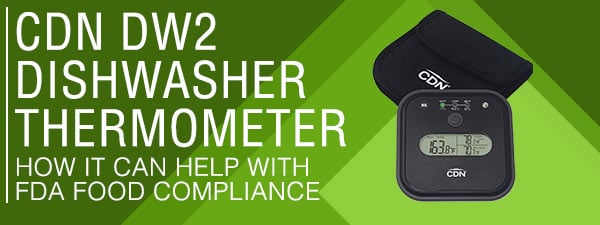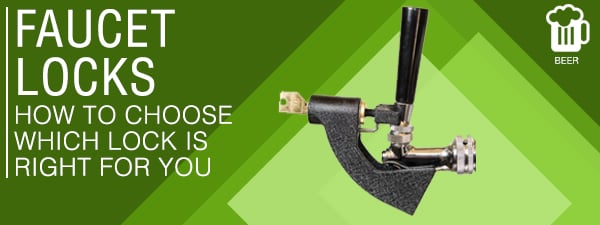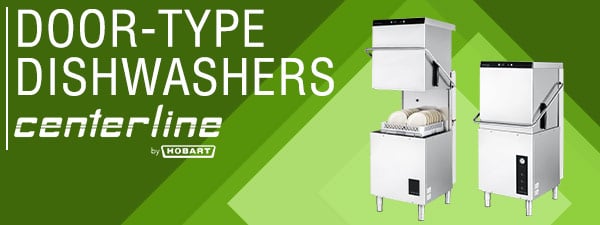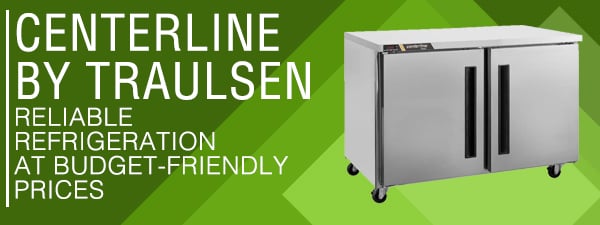Thermometer Technology for Commercial Kitchens
- Jul 29, 2019
- 0 Comments

There are a lot of thermometer options to choose from for your commercial or residential kitchen. To help you find the thermometer that will work best for your application, we’ve provided a breakdown of some of the most popular models.
A Cost-Effective Choice: Bimetal Thermometers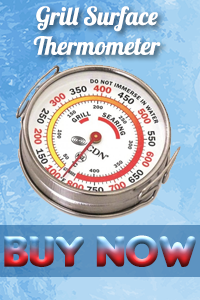
Bimetal or bimetallic thermometers are designed to take advantage of the fact that metals expand and contract in response to the surrounding temperature.
To create this thermometer, two metals with different expansion rates are bonded together, usually in the shape of a spiral or coil. When you use this thermometer to measure temperature, the metal that is more sensitive to heat will expand while the other will maintain its size, meaning the end of the coil will start to move in a certain direction.
How does this help provide you with an accurate temperature reading? The end of this coil is attached to the thermometer’s pointer, so as the end of the coil expands and moves, it pushes the pointer to display the correct temperature. This reading will display within 15 to 20 seconds, as long as the thermometer is properly inserted: past the top of the bimetal coil. To help ensure you are pushing the tip in far enough, CDN bimetallic thermometers have an indicator dimple on the stem.
To accommodate for the possibility that the bimetal coil could be slightly altered due to frequent use, this kind of thermometer needs to recalibrated periodically. CDN bimetal thermometers feature a NSF Certified nut that makes field recalibration easy – all you need is ice or boiling water!
Because of the relative simplicity of the design – it’s easy to use, can be calibrated in the field, and requires no batteries, bimetallic thermometers are a cost-effective alternative to digital thermometers for many commercial kitchens.
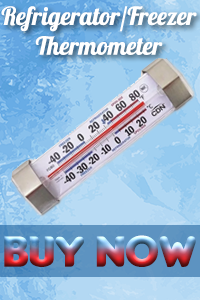 Easy to Use, Easy to Understand: Liquid-in-Glass Thermometers
Easy to Use, Easy to Understand: Liquid-in-Glass Thermometers
A glass column thermometer is probably the most well-known style: a liquid encased in a glass tube reacts to temperature changes, moving up and down alongside a scale.
While mercury used to be the go-to choice for the encased liquid, CDN thermometers use a red food-safe oil instead. This reduces the potential danger to your staff if the thermometer were to break. It is common for food-safe oil to separate in the thermometer column, however; but this can be easily remedied using a cooling or heating method.
Depending on the kind of liquid and the quality of the glass, these thermometers range from affordable to fairly expensive. CDN glass column thermometers are a durable option at a cost-effective price, and are individually calibrated for accuracy.
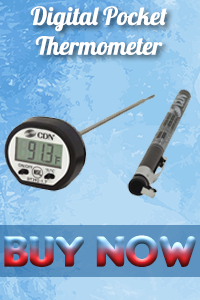 The Most Popular Thermometer Style: The Thermistor (Digital)
The Most Popular Thermometer Style: The Thermistor (Digital)
This thermometer measures temperature using the concept of electrical resistance – in other words, the ease with which a current moves through an object.
Thermistors generally tend to start out with a high resistance to electrical currents; as the temperature rises, this resistance radically decreases. To convert this information into a temperature reading, a small electric current is passed through the thermistor to measure the resistance. The resistance is then converted to voltage, and from there a temperature can be calculated.
One of the major ways that this thermometer differs from a bimetal thermometer is that the thermistor is usually about the size of a pin. Due to the smaller size and location (the tip of the thermometer), the thermometer doesn’t have to be inserted as deeply for an accurate read. The CDN ProAccurate Quick-Read thermistor thermometers only require you to insert the thermometer a fourth of an inch for a stable temperature reading in six seconds!
The Fastest Thermometer: Thermocouple (Digital)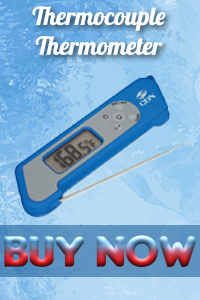
Thermocouples are similar to thermistors in that they also calculate a final temperature using voltage. Two dissimilar metals are joined at the tip of the thermometer and attached to a voltage-measuring device at the other end. When the tip is exposed to hot or cold temperatures, the two metals create a voltage from which a temperature is calculated.
This design is incredibly efficient, providing a temperature reading in as little as three seconds! They also have a thin probe, which means you can check the temperature of something like a roast with fewer worries about losing all the juice and causing the meat to dry out!
Another attractive feature of a thermocouple thermometer is the high temperature range. While the exact range depends on the metal combination/calibration (the most common of which are E, J, K, and T), even the calibrations with the lowest range can often handle temperatures close to 600 degrees Fahrenheit.
While these tend to be one of the more expensive thermometers, the quick response time, accuracy, field-calibration availability, and ability to handle high temperatures make this a must-have for many commercial kitchens.
No-Contact Temperature Readings: Infrared Thermometers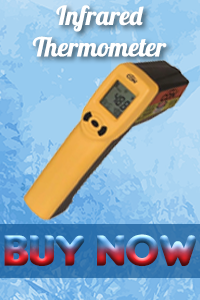
As you can probably guess from the name, infrared thermometers use infrared energy to measure temperature – the device focuses the infrared rays and converts them to electrical signal.
Infrared thermometers are great in situations where contact with the object being measured is impossible or unwise. Using this thermometer also eliminates any possibility of cross-contamination.
The downside of this thermometer is that it can only measure surface temperature (unless it is paired with another kind of thermometer technology, such as a thermocouple). It also has difficulty getting a reading from shiny surfaces such as gold.
